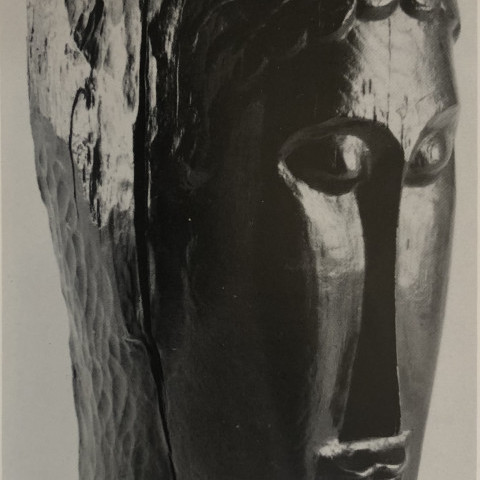Amadeo Modigliani was born in Livorno, Italy in July 1884. Both sides of his family were Sephardic Jews. His father Flaminio was an unsuccessful entrepreneur who had a small money-changing business, and his mother Eugenia, by far the stronger personality of the two, ran an experimental school. Thanks to his mother, the atmosphere of the household was always unconventional. He was the baby in his family and he was treated with special affection and favor. When he wanted to throw over his studies to become a painter, they promptly sent him to art school, first in Livorno and then in Florence and Venice. He won a student prize and was highly praised. When he jettisoned his bourgeois Italian heritage and rejected Renaissance painting tradition, he took on the mores of flagrant Parisian Bohemianism and adopted the forms of primitive art. He became a rake, a drunk, a hashish smoker, feeling that his being an artist set him above the morality of the world at large.
Modigliani arrived in Paris in 1906 at the age of twenty-one. His mother had agreed to give him a small allowance. Like Picasso, whom he sometimes emulated and Brancusi, with whom he studied, Modigliani found a source for simplified expressionistic representation of the human figure in African sculpture. Where the influence came to him directly, or through these early contacts, his trademark conventions of elongated neck, exaggerated oval eyes, and flat, scooped nose all ultimately derive from ritual tribal sculpture. As Modigliani paintings became more and more controlled and stylized, his life sank into increasing debauchery. He had a habit of stripping stark naked when drunk. Sooner or later he painted nearly everyone in his circle, working feverishly to complete each painting in a single session and vividly seizing the mood and manner of the subject.
The Left Bank neighborhood was a special place for foreign artists in the first decades of the 20th century. Among the international mix who gathered there were Picasso (Spain), deChirico (Italy), Nadelmann (Poland), Jules Pascin (Bulgaria), Diego Rivera (Mexico), Joseph Csaky (Hungary), Mondrian (Netherlands), Brancusi (Romania), Lipchitz (United States), Soutine (Russia). Many of them became subjects of Modigliani's portraits.
Of the many women who shared an hour, a month or a year with Modigliani, only two had a lasting effect on the artist and his work. Beatrice Hastings was a well-born South African poet whom Modigliani met in 1914. She was five years older than he; she had a little money. For two years he lived in her small cottage in Montparnasse, painting her portrait ten times and drawing her endlessly. His art became more sure, his style increasingly individual. But his life with Beatrice became more and more tempestuous, marked with heavy drinking. They quarreled often and often came to blows. On one occasion he threw her out of a window and eventually he left her.
Within a year he had formed the final and deepest attachment of his life. In 1917, he met Jeanne Hebuterne, a slim nineteen year old art student. They became inseparable and Modigliani's friends had hopes that Jeanne would bring health and order into his life. But the painter was already spent with drink, drugs and disease and Jeanne's only desire was to please him. For three years she posed for him, cared for him and bore him a child, a daughter. They moved to Nice for a while, fought a lot, separated for a while. Her mother, whom Modigliani loathed because she disapproved of him, moved to be near them. He got drunk on the way to register the baby as his own, and she remained officially fatherless, though she was later adopted by his family in Italy. In May 1919 he returned to Paris, leaving Jeanne and the baby behind.
When he died at thirty-six on January 24, 1920 of tubercular meningitis, Jeanne leapt from a fifth floor window two days later to rejoin him in death, in spite of the fact that she was pregnant with his second child.
His mother took his daughter into her home and brought her up in a happy environment. She became a teacher and had a family.
Source: askart.com

